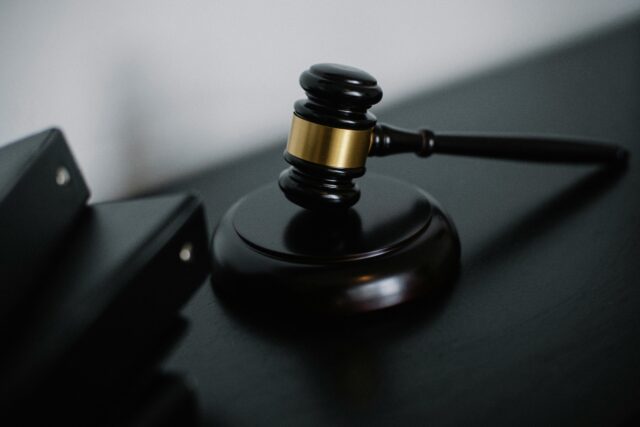The opioid crisis, a global public health emergency, has deeply impacted communities and continues to strain healthcare systems worldwide. At the heart of this crisis lies a complex interplay of factors, including overprescription, addiction, and overdose. In recent years, a new wave of legal battles has emerged, centering on one particular medication, i.e., Suboxone.
Suboxone, a combination drug used to treat opioid addiction, has been a controversial topic for years. While it has helped many recover from addiction, Suboxone has also faced significant scrutiny and legal challenges. In this article, we’ll explore the key issues behind Suboxone lawsuits, focusing on marketing, prescription practices, and potential side effects.
Understanding Suboxone: What It Is and How It Works
Suboxone is a drug used to treat opioid addiction. It combines two ingredients: naloxone and buprenorphine. Naloxone blocks the effects of opioids if injected, deterring misuse, while buprenorphine helps curb cravings for opioids and eases withdrawal symptoms.
Suboxone is often prescribed as part of a comprehensive treatment plan for opioid addiction, helping reduce relapse risk and promote stable recovery. However, concerns have arisen regarding its potential for misuse, side effects, and the legal aspects of its distribution. Despite its benefits, these issues have contributed to the ongoing controversy surrounding Suboxone.
In 2022, the CDC reported that 25.1% of US adults with opioid use disorder received medications, including Suboxone. This translates to approximately 2.35 million people using medications like Suboxone to manage withdrawal symptoms and reduce cravings. It highlights its widespread use in treating this serious condition. However, despite its effectiveness, Suboxone has been involved in various legal controversies.
What makes Suboxone different from other addiction treatments?
Suboxone distinguishes itself from other addiction treatments by employing a dual-action approach. It blends buprenorphine, which partially activates opioid receptors, with naloxone, a substance that blocks opioid effects. This unique formulation alleviates withdrawal symptoms and cravings while diminishing the euphoric effects, thereby reducing the risk of abuse. Unlike methadone, Suboxone can be prescribed in outpatient settings, offering greater convenience for patients.
Key Controversies Surrounding Suboxone
Although Suboxone offers benefits in treating opioid addiction, it has generated considerable controversy. A major concern is its potential for misuse. While intended to alleviate cravings without causing euphoria, some individuals abuse Suboxone for its sedative effects. Critics argue that prescribing practices fail to adequately address this misuse risk.
However, the American Addiction Centers reported that Suboxone has minimal potential to trigger a dopamine surge due to buprenorphine’s weak effect. The naloxone component further reduces the chance of euphoria. As a result, many medical professionals view Suboxone as a safer, less addictive treatment, with the DEA classifying it as Schedule III.
Also, there have been allegations of aggressive marketing tactics by pharmaceutical companies, including misleading claims about the drug’s safety and efficacy. In addition, some patients have raised concerns about side effects. The most frequent side effects of Suboxone, impacting over 1 in 10 individuals, include difficulty sleeping, constipation, nausea, sweating, headaches, and withdrawal symptoms.
Legal Grounds for Suboxone Lawsuits
Suboxone lawsuits primarily arise from claims of improper marketing, product liability, and inadequate risk warnings. Many lawsuits accuse pharmaceutical companies of deceptive marketing, exaggerating the drug’s safety while downplaying its misuse potential and side effects. Additionally, patients and healthcare providers argue that Suboxone’s addictive properties were not properly disclosed, leading to dependency.
Product liability cases often revolve around allegations that the drug caused harm due to its design, formulation, or side effects. Some legal actions also question the ethical responsibility of prescribing Suboxone without proper monitoring of patients for long-term risks.
As of December 2024, Drugwatch reported 716 pending Suboxone tooth decay lawsuits in multidistrict litigation (MDL) in the Northern District of Ohio. Most claims focused on insufficient warnings about the drug’s addiction risks and side effects. These cases have heightened public concern over Suboxone’s safety and transparency in its marketing.
Can individuals still join existing class-action lawsuits against Suboxone manufacturers?
Yes, individuals may join existing Suboxone class-action lawsuits if they meet eligibility criteria, such as experiencing adverse drug effects. Typically, class actions allow affected individuals to seek compensation collectively. A lawyer can assess your eligibility and potential involvement in a lawsuit.
Suboxone Lawsuit Payouts: What Affected Parties Should Know
Understanding compensation potential is vital for those impacted by Suboxone’s adverse effects or deceptive marketing. Suboxone lawsuits often allege product liability, misleading advertising, and insufficient warnings about addiction risks and side effects. In class-action cases, affected individuals may receive compensation for medical costs, pain and suffering, and damages resulting from the drug’s use.
Suboxone lawsuit payout per person varies widely based on factors like injury severity and the number of claimants involved. Larger settlements may be achieved, but individual payouts are typically determined by the unique circumstances of each case. These details play a crucial role in shaping the compensation amount for affected parties.
According to TruLaw, Suboxone lawsuit settlements are estimated to range between $10,000 and $500,000. Minor dental damage cases typically settle for $10,000 to $50,000, while moderate cases may receive $50,000 to $150,000. Individuals with severe dental damage requiring extensive treatment could receive settlements ranging from $150,000 to $500,000 or more.
The Role of Medical Professionals and Pharmaceutical Companies
Medical professionals and pharmaceutical companies are crucial in Suboxone’s use, balancing its effectiveness for opioid addiction with associated controversies. Doctors must prescribe medications responsibly, screen patients for risks, and explain potential side effects. However, lawsuits highlight inadequate oversight, with some professionals failing to monitor long-term use or warn patients about Suboxone’s addictive potential.
Pharmaceutical companies face accusations of aggressive marketing, minimizing addiction risks while exaggerating benefits. They are also criticized for failing to provide adequate labeling and warnings about Suboxone’s potential side effects, raising concerns about accountability.
Steps to Take if You’ve Been Affected by Suboxone
If Suboxone has caused adverse effects, addiction, or insufficient warnings, it’s vital to protect your rights and pursue compensation. Begin by consulting a healthcare professional to evaluate its health impact and document related symptoms or side effects. Then, contact a pharmaceutical litigation attorney to assess your eligibility for individual or class-action lawsuits.
It’s important to gather medical records, prescription details, and any communication with healthcare providers regarding Suboxone. Finally, stay informed about ongoing legal developments, as settlements and case outcomes may impact your potential for compensation.
How can I find the right lawyer for a Suboxone-related case?
To ensure optimal legal representation for a Suboxone-related case, it’s crucial to seek an attorney specializing in pharmaceutical litigation or product liability. Prioritize lawyers with a proven track record of handling similar cases successfully and a strong reputation in the field. A consultation can help assess their approach, ensuring they are well-versed in handling complex medical and legal issues.
Navigating Successfully Through Suboxone Lawsuits
Suboxone has been pivotal in treating opioid addiction, benefiting many in recovery. However, its risks and controversies surrounding marketing, prescription practices, and long-term effects have sparked numerous lawsuits. Affected individuals should understand the legal landscape, seek counsel, and ensure medical professionals and pharmaceutical companies prioritize transparency and patient safety.




